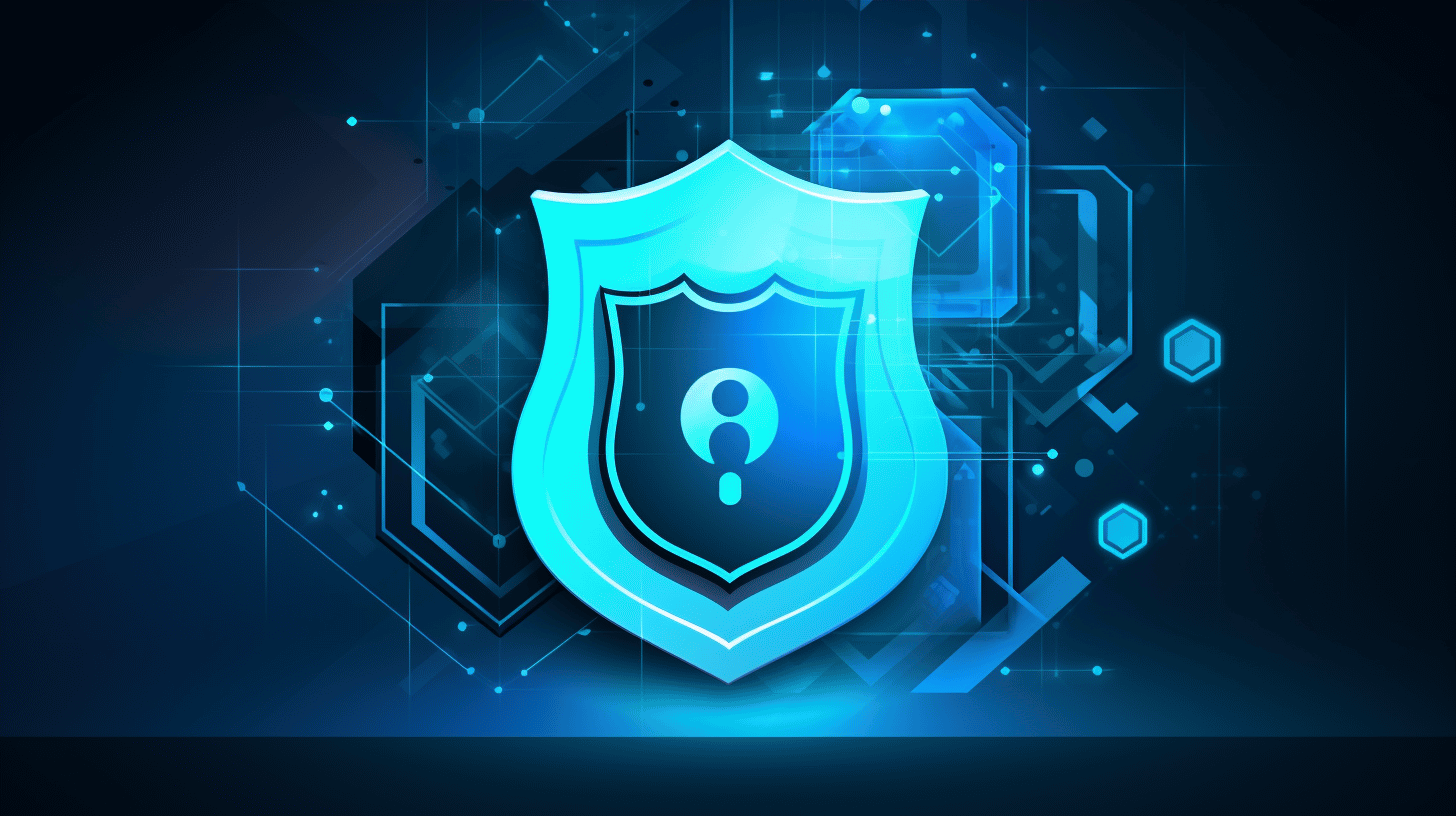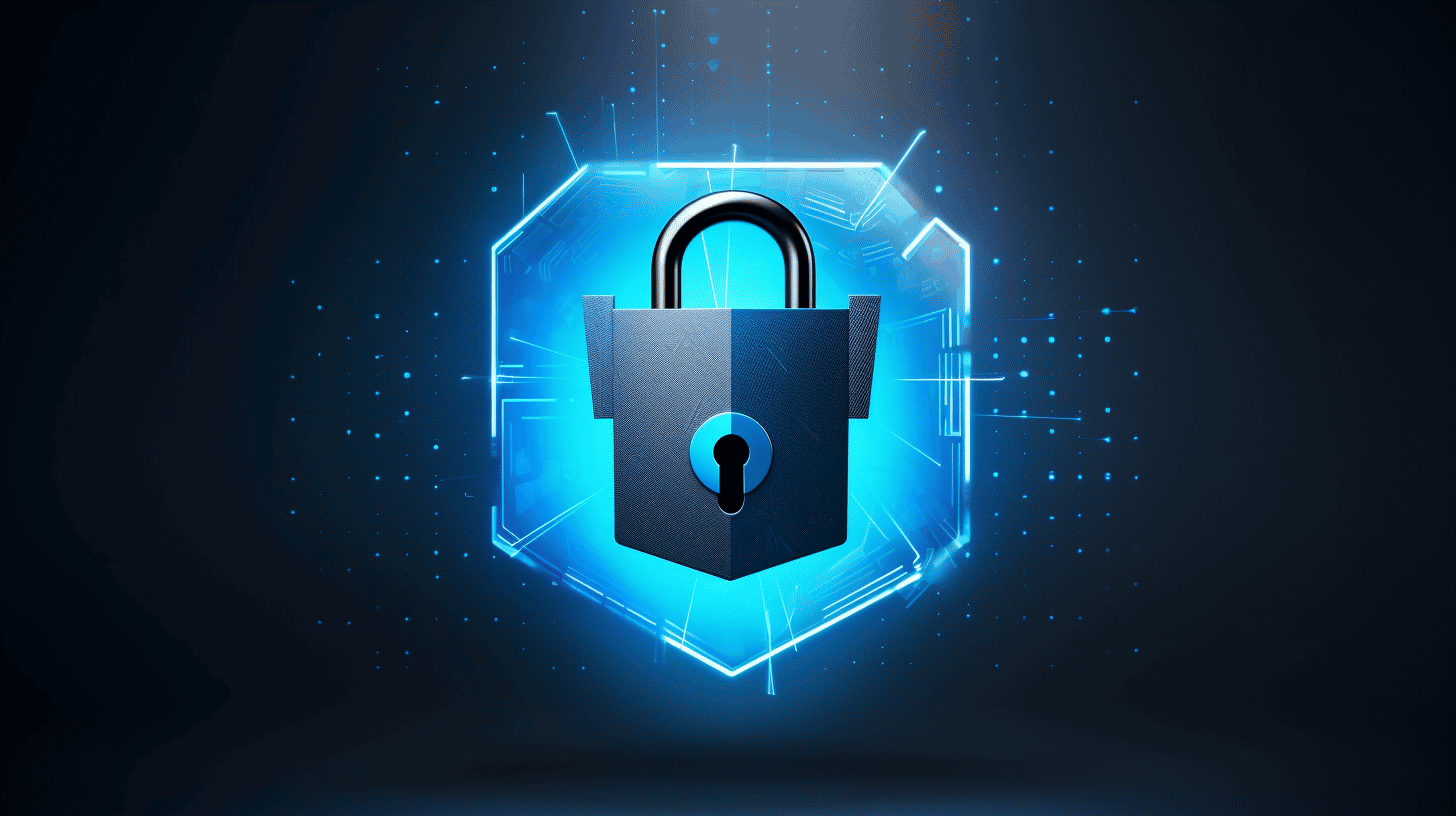多年來,WordPress 已經獲得了廣泛的歡迎,成為網站創建和管理的首選平台。它為全球數百萬個網站提供支持,包括個人部落格、電子商務商店甚至公司網站。 WordPress 具有用戶友好的介面和大量可自訂的主題和插件,使用戶能夠毫不費力地創建自己的線上形象。
然而,能力越大,責任越大。隨著越來越多的網站基於 WordPress 構建,它已成為尋求利用漏洞並未經授權存取敏感資料的網路犯罪分子的目標。這對網站的安全和正常運作時間構成了重大威脅。
在本文中,我們將深入探討 WordPress 使用者在資料安全性和網站正常運作時間方面所面臨的痛點。我們將探討與 WordPress 相關的漏洞、網路安全威脅的興起以及強大的使用者憑證和外掛程式管理的重要性。我們還將提供最佳保護策略,幫助您保護您的 WordPress 網站免受這些潛在風險。那麼,讓我們深入研究並正面解決這些痛點吧! 🚀
了解 WordPress 漏洞
WordPress 是一種廣受歡迎的內容管理系統,對漏洞並不陌生。這些安全漏洞可能會使您的網站遭受攻擊,危及您的資料並可能損害您的聲譽。在本節中,我們將深入探討 WordPress 生態系統中漏洞的成長、外掛程式帶來的特定威脅以及未修補漏洞相關的風險。
脆弱性成長
多年來,WordPress 生態系統中揭露的漏洞數量一直在上升。事實上,光是 2023 年,就報告了驚人的 4,833 個漏洞。這一數字比前一年增加了一倍多,反映出 WordPress 越來越受到惡意行為者的關注。
來自插件的威脅
外掛程式是增強 WordPress 網站功能的附加元件,通常是攻擊者的主要目標。 WordPress 生態系統中大約有 90% 的已知漏洞是專門針對外掛程式的。這意味著,即使您擁有一個安全的 WordPress 核心安裝,易受攻擊的外掛程式仍然可能使您的網站容易受到攻擊。
與插件漏洞相關的最普遍的威脅之一是跨站點腳本 (XSS)。這種類型的攻擊允許駭客將惡意腳本注入使用者查看的網頁,可能導致敏感資訊被盜或使用者會話被劫持。注意安裝的插件並定期更新它們以確保您受到已知漏洞的保護至關重要。
未修補漏洞的風險
儘管 WordPress 社群迅速解決漏洞並發布補丁,但並非所有網站所有者都勤於應用這些更新。因此,大量漏洞仍未修補。事實上,截至 2023 年上半年,WordPress 生態系統中仍有 26% 個已知漏洞未修補。
未修補的漏洞會對您網站的安全構成重大風險。駭客會積極尋找未套用必要更新的網站,因為這些網站為他們的惡意活動提供了便利的切入點。忽視及時修補漏洞可能會導致嚴重後果,包括用戶資料外洩、網站損壞,甚至完全失去對線上狀態的控制。
至關重要的是,網站所有者應優先修補漏洞以確保其 WordPress 安裝的安全。
請記得定期更新 WordPress 核心、外掛和主題的重要性。這些更新通常包含關鍵的安全補丁,可以解決已知漏洞並保護您的網站免受潛在攻擊。
WordPress 中的網路安全威脅
多年來,WordPress 的世界無疑已經不斷發展壯大,數以百萬計的網站依賴這個強大的內容管理系統。然而,隨著普及,網路威脅的風險也隨之增加。 WordPress 網站所有者和開發人員必須意識到潛在的風險並採取必要的預防措施來保護他們的網站和資料。
在本文中,我們將探討 WordPress 網站面臨的一些最常見的網路安全威脅,並討論減輕這些風險的方法。讓我們開始吧!
清理漏洞的力道加大
WordPress 用戶關注的一個重要問題是需要解決的漏洞數量的增加。根據最近的數據,從 2022 年到 2023 年,WordPress 生態系統的漏洞清理數量增加了 24%[1]。惡意行為者可以利用這些漏洞來未經授權存取網站、竊取敏感資訊或註入惡意程式碼。
為了保護您的 WordPress 網站免受漏洞攻擊,請考慮實施以下最佳做法:
- 定期更新您的 WordPress 核心、主題和插件,以確保您擁有最新的安全性修補程式和錯誤修復。
- 對所有使用者帳戶(包括管理員帳戶和資料庫帳戶)使用強而獨特的密碼。
- 安裝一個信譽良好的安全插件,提供惡意軟體掃描、防火牆保護和登入安全性等功能。
惡意軟體攻擊
惡意軟體攻擊對 WordPress 網站構成了重大威脅,約有 72.72% 的攻擊針對 WordPress[2]。惡意軟體 (Malware) 可以滲透到您的網站並造成各種損害,包括未經授權的存取、資料竊取和污損。
為了保護您的 WordPress 網站免受惡意軟體攻擊,請考慮採取以下預防措施:
- 使用安全插件或線上掃描器定期掃描您的網站是否有惡意軟體。
- 將外掛程式和主題的使用限制在僅可信來源並保持其更新。
- 啟用 Web 應用程式防火牆 (WAF) 來阻止惡意流量並過濾掉常見的攻擊模式。
Web Shell 攻擊
近年來,Web shell 攻擊呈現令人擔憂的成長趨勢,2023 年針對 WordPress 網站的攻擊次數超過 420 億次[3]。 Web shell 為攻擊者提供了對受感染網站的未經授權的訪問,使他們能夠執行任意命令,上傳惡意檔案並控制整個系統。
為了防止 Web Shell 攻擊,採取以下預防措施至關重要:
- 定期監控您的網站的檔案系統是否有任何可疑或不熟悉的檔案。
- 將檔案上傳功能的使用限制為僅限受信任的使用者和目錄。
- 實施嚴格的文件權限,以防止未經授權存取關鍵文件和目錄。
隨著 WordPress 的使用不斷增長,對強大的網路安全措施的需求也不斷增長。透過保持警惕、採用最佳實踐並定期更新安全措施,您可以顯著降低成為網路威脅受害者的風險。保護您的 WordPress 網站並確保您和您的用戶享受安全的線上體驗。
「談到網路安全威脅,預防總是勝於治療。保持主動並保護您的 WordPress 網站免受潛在攻擊!
[1] 參考文獻 1
[2] 參考文獻 2
[3] 參考文獻 3
弱用戶憑證和無效插件的流行及其影響
在眾多的網路安全威脅中,薄弱的使用者憑證和使用無效外掛程式已成為網站的主要漏洞。這兩個因素經常被忽視,可能會使網站容易受到攻擊並損害其完整性。讓我們更深入地探討這些安全風險的普遍性和影響。
弱用戶憑證:
使用者憑證(例如使用者名稱和密碼)是授予網站後端存取權限的金鑰。不幸的是,許多網站所有者低估了使用強而獨特的密碼的重要性。因此,弱的使用者憑證仍然是攻擊者最常見的切入點之一。以下是需要考慮的一些關鍵點:
- 根據 Verizon 的一項研究,2019 年,洩漏的憑證是造成 80% 起駭客相關違規行為的罪魁禍首。
- 弱密碼就像不鎖門一樣-會引來不速之客。容易猜測的密碼,例如“123456”或“password”,可以在幾秒鐘內被破解。
- 攻擊者經常採用暴力破解或憑證填充等方法來獲取對網站的未經授權的存取。利用正確的工具,他們可以在短時間內嘗試數千種密碼組合。
無效的插件:
無效外掛程式(也稱為盜版或破解外掛程式)對網站安全構成另一個重大風險。這些是高級插件的未經授權的版本,已被修改以繞過許可限制。讓我們來探索一下它們的影響:
- 無效的插件可能包含駭客注入的惡意程式碼,使他們能夠控制您的網站或收集敏感資訊。
- 由於無效插件不受其原始開發人員的支持,因此它們很少收到更新或安全性修補程式。這會使您的網站容易受到合法版本中已修補的已知漏洞的攻擊。
- 使用無效外掛違反了版權法,並可能導致法律後果,包括刪除通知和訴訟。
嚴峻的現實:
弱用戶憑證和無效插件的使用現象的普遍性無論怎樣強調都不為過。請考慮以下令人警醒的統計數據:
- SplashData 的報告顯示,全球仍有超過 2,300 萬個帳戶使用「123456」作為密碼。
- WordPress 插件庫中擁有超過 50,000 個插件,攻擊者可以輕鬆找到並修改易受攻擊的插件以用於惡意目的。
為了應對這些威脅,網站所有者必須優先考慮線上安全措施。這些包括實施強密碼策略、使用雙重認證、定期更新外掛程式和主題以及進行安全審核。透過採取主動措施保護其網站安全,個人和企業可以大幅降低成為這些常見攻擊媒介的受害者的風險。
專業提示:託管 WordPress 託管服務提供者,例如 託管WP,提供強大的安全措施和專家支持,幫助保護您的網站免受駭客和惡意活動的侵害。值得考慮將其作為您 WordPress 網站的額外保護層。
請記住,對弱用戶憑證和無效插件的強力防禦是實現安全在線狀態的基本一步。保持警惕,注意防護! 🛡️
外掛程式管理和安全的重要性
大多數網站所有者都了解保護網站免受潛在威脅的重要性。然而,當談到 WordPress 網站時,許多人忽略了外掛程式管理在維護網站安全方面發揮的關鍵作用。
外掛是增強 WordPress 網站功能和特性的重要工具。它們允許用戶添加各種功能,從聯絡表單到社交媒體整合等等。然而,能力越大,責任越大,插件管理絕不能掉以輕心。
核心漏洞
雖然 WordPress 本身是一個強大且安全的平台,但仍然會出現漏洞,尤其是在核心軟體中。然而,好消息是這些漏洞通常會被 WordPress 開發團隊相對快速地發現並修補。事實上,根據最近的統計數據,2023 年新報告的漏洞中只有 0.2% 與 WordPress 核心有關[1].
主題問題
另一個潛在的漏洞來源是 WordPress 網站使用的主題。主題控制網站的整體設計、佈局和外觀。截至 2023 年,只有 2% 的漏洞是由主題問題引起的,其中 4% 歸因於核心 WordPress 軟體[2]。因此,雖然主題也應該保持最新,但重點應該主要放在插件上。
插件的作用
外掛是造成 WordPress 網站中大多數漏洞的根源。這些漏洞可能由於過時的外掛程式、薄弱的編碼實踐以及不再受開發人員支援的維護不善的插件而出現。事實上,對超過 428 個外掛程式和 72 個存在已知漏洞的主題的持續監控,展示了持續存在的安全挑戰[3].
那麼,網站所有者可以做些什麼來確保外掛程式管理和安全被優先考慮?
- 定期更新外掛:始終保持您的 WordPress 外掛程式更新到最新版本。開發人員經常發布更新來解決可能存在的任何漏洞或錯誤。
- 刪除未使用的插件:如果您不再需要某個插件,最好將其全部刪除。如果不定期更新,未使用的插件可能會成為潛在的安全風險。
- 選擇信譽良好的外掛:為您的網站選擇外掛程式時,請確保選擇信譽良好、有定期更新和良好評價記錄的外掛程式。避免從不信任的來源下載插件。
- 監控插件漏洞:隨時了解與您的插件相關的任何漏洞。定期檢查插件開發人員提供的安全建議和更新。
透過遵循這些最佳實踐,網站所有者可以顯著增強其 WordPress 網站的安全性。有效的插件管理是防範潛在威脅和確保線上服務順暢和安全的關鍵。
[1] 來源
[2] 來源
[3] 來源
WordPress 的最佳保護策略
在當今的數位環境中,保護您的網站安全至關重要。隨著網路威脅和漏洞的不斷增加,實施強大的保護策略至關重要,尤其是對於 WordPress 等流行平台。這些策略不僅可以保護您的網站,還可以讓您安心,因為您知道已經採取了必要的預防措施。
保護您的 WordPress 網站的關鍵方面是使用安全性外掛程式。這些外掛程式旨在加強您網站的防禦能力,檢測和減輕潛在威脅,並增強整體安全性。在選擇安全插件時,建議混合使用免費和付費選項。事實上,統計數據顯示,大約 75% 的 WordPress 使用者都同時使用了這兩種方式。
免費和付費安全插件的組合可確保全面的保護,因為每種類型都具有獨特的功能和優勢。免費外掛程式是一個很好的起點,可以為保護您的網站提供堅實的基礎。另一方面,高級插件通常提供高級功能和專門支持,為您提供額外的安全保障。
為了幫助您為 WordPress 網站選擇正確的安全插件,以下是一些流行的選項:
- 字柵欄:Wordfence 是 WordPress 社群中最廣泛使用的安全性外掛程式之一,它提供一系列功能,例如惡意軟體掃描、防火牆保護、登入安全性和即時威脅情報。
- 蘇庫里安全:Sucuri Security 以其出色的網站掃描功能而聞名,提供全面的安全解決方案,包括惡意軟體清除、網站強化和持續監控。
- i主題安全:iThemes Security 原名為 Better WP Security,提供多種安全功能,如檔案變更偵測、雙重認證、暴力破解保護和資料庫備份。
- 盾安保:該插件強調易用性並提供了用於管理安全設定的直覺式介面。它提供針對暴力攻擊、文件更改偵測和登入安全性增強的保護。
- 防彈安全:BulletProof Security 非常注重保護網站的核心文件,提供了強大的防火牆、惡意軟體掃描程式和全面的登入安全措施。
請記住,雖然安全外掛至關重要,但它們只是保護您的 WordPress 網站的一部分。遵循最佳實踐同樣重要,例如保持 WordPress 安裝和外掛程式為最新版本、使用強大而獨特的密碼、定期備份您的網站以及維護安全的託管環境。
透過實施強大的安全性外掛程式組合並遵循最佳安全實踐,您可以確保為您的 WordPress 網站提供最佳保護,使其免受潛在威脅並維護您的線上狀態的完整性。
🔒 有關 WordPress 安全措施的更多詳細信息,請查看 WordPress 安全措施 文章。 🔒
結論
總之,解決資料安全性和網站正常運行時間的痛點對於 WordPress 用戶來說至關重要。隨著漏洞和外掛程式帶來的威脅日益增多,採取有效措施保護您的 WordPress 網站並確保其順利運行至關重要。
惡意軟體攻擊和 Web Shell 攻擊等網路安全威脅日益增多,因此優先考慮 WordPress 網站的安全性就顯得更加重要。薄弱的使用者憑證和使用無效的插件也帶來需要解決的重大風險。
為了優化您的 WordPress 網站的保護,外掛程式管理和安全性起著至關重要的作用。核心漏洞、主題問題以及可靠且值得信賴的插件的使用應該是維護網站安全的重點領域。
透過實施最佳保護策略(例如定期更新和監控),您可以保護您的 WordPress 網站免受潛在威脅並確保其穩定性。提供安全可靠的使用者體驗對於您網站的成功至關重要,而Managed-WP平台可以幫助您實現這一點。
訪問 託管WP 網站了解他們的高階管理 WordPress 雲端託管平台如何簡化基礎架構、提供自由的數位體驗,並提供專業的 24/7/365 WordPress 支援、WordPress NOC、備份管理、修補程式管理和主動監控。使用 Managed-WP 控制您的 WordPress 網站的安全性和正常運行時間,以充分發揮其潛力。
常見問題解答
- 有哪些有效的方法可以增強我的 WordPress 網站的資料安全性?
為了增強 WordPress 網站的資料安全性,您可以:1. 確保定期備份網站數據,2. 對所有使用者帳戶使用強大且唯一的密碼,3. 安裝 Wordfence 或 Sucuri 等安全插件,4. 保持 WordPress 和所有插件/主題保持更新,以及 5. 實施 SSL 憑證以進行加密通訊。
- 為什麼網站正常運作時間很重要以及如何確保我的 WordPress 網站的正常運作時間?
網站正常運行時間非常重要,因為它可以確保訪客可以訪問您的網站並有助於保持積極的用戶體驗。為了確保您的 WordPress 網站的正常運行,您可以:1. 選擇可靠的託管服務供應商,2. 優化網站的效能,3. 使用 Pingdom 或 UptimeRobot 等工具監控網站的正常運行時間,4. 設定停機通知,以及 5. 使用快取外掛程式加快載入時間。
- 是否有專為資料安全設計的 WordPress 外掛?
是的,有幾個專為資料安全設計的 WordPress 外掛。一些流行的包括 Wordfence、Sucuri Security、iThemes Security 和 All In One WP Security & Firewall。這些外掛程式提供惡意軟體掃描、防火牆保護、登入安全性等功能,以增強您的 WordPress 網站的安全性。
- 我應該多久備份一次我的 WordPress 網站的資料?
建議定期備份您的 WordPress 網站的數據,以確保在發生任何資料遺失或安全漏洞時您擁有最新的副本。根據內容更新的頻率,通常建議每週或每天備份。此外,也建議將多個備份儲存在安全的異地位置。
- 如果我的 WordPress 網站出現安全漏洞或停機,我該怎麼辦?
如果您的 WordPress 網站遇到安全漏洞,您應該立即採取以下步驟:1. 隔離並刪除受影響的檔案/外掛程式/主題,2. 更改所有密碼和使用者存取憑證,3. 使用安全性外掛程式掃描您的網站,4. 修補任何漏洞,5. 監控並加強您網站的安全性。如果發生停機,請聯絡您的主機服務供應商調查並解決問題。



















